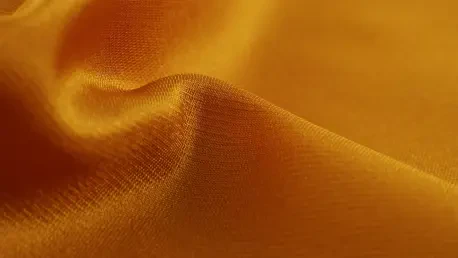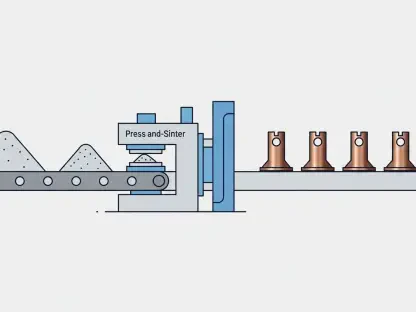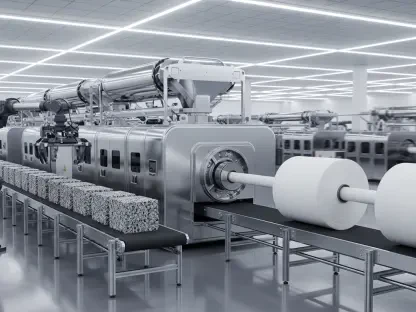The Reactive Orange 84 market is experiencing a remarkable upswing, fueled by its essential role in the textile industry and its growing applications across various sectors. This synthetic dye, known for creating vibrant, long-lasting colors through strong covalent bonds with materials like cotton and rayon, has established itself as a vital component in industrial coloration. With a market valuation of USD 400 million in 2024, projections suggest an increase to USD 500 million by 2035, driven by a steady compound annual growth rate (CAGR) of 3.2%. This upward trend reflects strong global demand for high-quality, colorful fabrics and the dye’s adaptability to diverse manufacturing needs. Beyond textiles, its use in paper, leather, and specialty materials further boosts its industrial importance. Exploring the forces behind this growth reveals a complex mix of industry trends, technological advancements, and environmental considerations, all shaping the future of this dynamic market.
Fueling Demand Through Textile Industry Expansion
The textile industry’s rapid growth, especially in emerging economies across Asia-Pacific, Latin America, and parts of Africa, stands as a primary driver for the Reactive Orange 84 market’s expansion. These regions benefit from low production costs, supportive government policies, and a growing consumer base, creating ideal conditions for increased dye consumption. The surge in demand for fashionable apparel and home textiles, fueled by changing style preferences and rising disposable incomes, positions Reactive Orange 84 as a key solution for market needs. Its ability to deliver vibrant, durable colors makes it a top choice for manufacturers aiming to produce visually appealing and long-lasting products. This trend is particularly evident as global trade networks strengthen, with textile exports from manufacturing hubs reaching developed markets, further driving the need for high-performance dyes.
Beyond traditional clothing, Reactive Orange 84 is widely used in technical textiles and niche products, expanding its market scope. Its compatibility with various dyeing techniques allows manufacturers to meet specialized industrial demands, from automotive fabrics to protective gear. This versatility not only increases its appeal but also creates new revenue streams, contributing to sustained market growth. Additionally, the dye’s role in enhancing the aesthetic and functional quality of textiles aligns with consumer expectations for premium goods. As urbanization and economic development continue to drive textile consumption in key regions, the market for Reactive Orange 84 is well-positioned to capitalize on these opportunities, solidifying its critical role within the global supply chain.
Navigating Environmental and Regulatory Hurdles
Despite its strong market presence, Reactive Orange 84 faces significant challenges due to environmental concerns that affect its growth trajectory. The dye’s water-soluble nature poses a risk of wastewater pollution, a critical issue in regions with strict environmental standards like North America and Europe. Regulatory bodies in these areas require rigorous compliance, forcing manufacturers to invest in advanced effluent treatment systems to reduce ecological harm. While necessary, such measures often lead to higher operational costs, potentially impacting profit margins and creating financial strain, especially for smaller players in the industry. Balancing industrial output with environmental responsibility remains a key challenge that influences strategic decision-making across the sector.
Adding to this issue is the growing consumer preference for natural and eco-friendly dyes, particularly in sustainability-focused market segments. As awareness of environmental impacts increases, alternatives to synthetic dyes gain popularity, posing a competitive threat to Reactive Orange 84. This shift is clear in organic textile markets where greener options are often preferred despite higher costs. Manufacturers must therefore navigate a landscape where regulatory pressures and market preferences demand cleaner production methods. Adapting to these demands requires significant investment in research and sustainable practices, highlighting the need for innovation to maintain market relevance while addressing ecological concerns that could otherwise hinder long-term growth.
Seizing Opportunities Through Innovation and Trends
Amid these challenges, the Reactive Orange 84 market is full of opportunities driven by technological advancements that promise to shape its future. Innovations in dyeing processes, such as low-temperature and high-efficiency techniques, are gaining traction as solutions to lessen environmental impact while maintaining the dye’s excellent performance. These advancements not only help manufacturers comply with strict regulations but also reduce energy and water usage, aligning with global sustainability goals. The rise of digital textile printing represents another major opportunity, enabling customized and detailed designs that meet the growing consumer demand for personalized fashion. Reactive Orange 84’s vibrant results make it a perfect fit for this cutting-edge application, positioning it as a leader in modern textile production.
Sustainability trends are also shaping the market, with a growing focus on developing eco-friendly dye formulations and biodegradable alternatives. Manufacturers are exploring low-water dyeing methods to minimize waste, responding to both regulatory requirements and consumer expectations for greener products. At the same time, the demand for premium apparel continues to grow among fashion-conscious buyers with greater purchasing power, driving the need for dyes that offer exceptional colorfastness and aesthetic appeal. Enhanced effluent management systems are becoming standard in dyeing facilities, ensuring compliance while promoting responsible use of synthetic dyes. These evolving trends and technological breakthroughs point to a path forward where adaptability and innovation will be crucial to sustaining the market’s growth and meeting the dual demands of performance and environmental stewardship.
Shaping a Sustainable Future for Market Growth
Looking ahead, the Reactive Orange 84 market is set to maintain its growth momentum, supported by strategic responses to both opportunities and challenges. Asia-Pacific is expected to remain the leading region due to its strong textile manufacturing base and cost advantages, while North America and Europe will focus on sustainability in their demand for high-quality dyes. The projected rise from USD 400 million in 2024 to USD 500 million by 2035 at a CAGR of 3.2% reflects confidence in the dye’s lasting relevance, provided the industry adapts to changing dynamics. Continued investment in greener production methods and advanced technologies will be essential to overcoming environmental hurdles and maintaining a competitive edge against natural dye alternatives.
Reflecting on the broader landscape, it’s clear that Reactive Orange 84 has established itself as a vital component in industrial coloration by delivering unmatched performance across diverse applications. The path forward depends on collaborative efforts to innovate, ensuring that sustainability and efficiency remain central to market strategies. Industry stakeholders must prioritize practical solutions, such as adopting cutting-edge effluent treatments and exploring new application areas like synthetic fabrics and leather. By embracing these steps, the market can not only address past challenges but also pave the way for a resilient and responsible future, meeting the evolving needs of global consumers and regulators alike.









